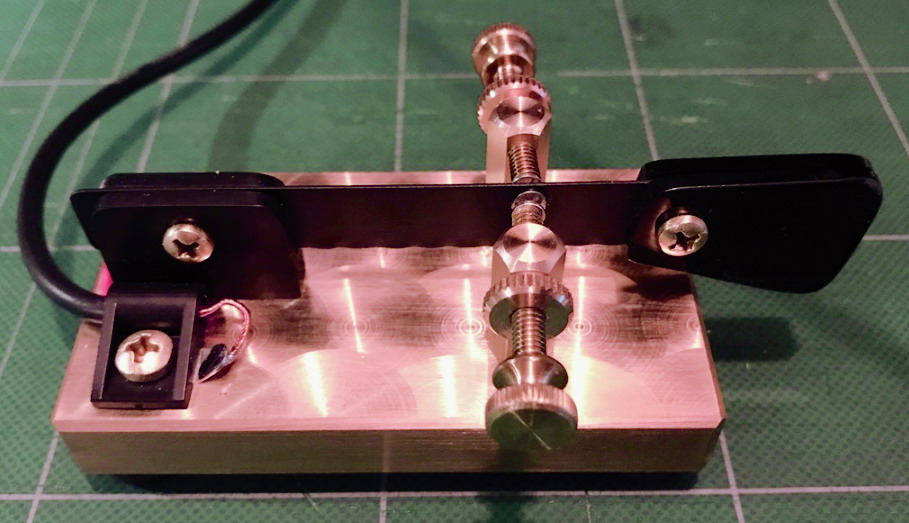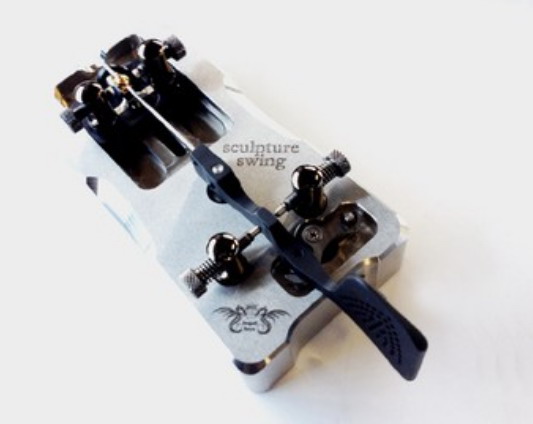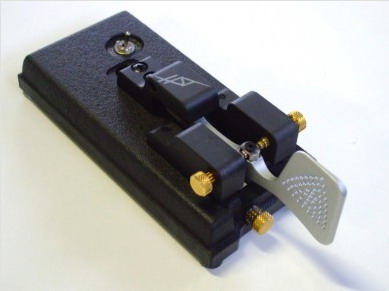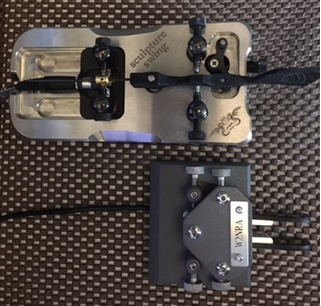
PA3CLQ's Leuke Linken Nr. 478
Beste mede amateur,
Dear
fellow amateur,
In
deze mail staat een link waarop het vijfendertigste DKARS-Magazine is
te downloaden.
This mail
contains a link which the 35th- DKARS-Magazine is available for
download.
De Dutch Kingdom Amateur
Radio Society is een stichting die de belangen wenst te behartigen
van ALLE radioamateurs binnen het gehele Koninkrijk der Nederlanden.
The Kingdom Dutch Amateur Radio Society is an organization that seeks to represent the interests of ALL radio amateurs throughout the Kingdom of the Netherlands.
De DKARS doet niet
aan copyright en het staat een ieder vrij om deze link aan zoveel
mogelijk radiovrienden door te
sturen.
The DKARS does not copyrighted
and any person shall be free to forward this
link to as many radio friends.
DKARS Magazine verschijnt 1x per maand en wij
stellen het uiteraard op prijs als je ook (radio amateur
gerelateerde) bijdrages wilt leveren.
DKARS Magazine appears 1x per
month and we obviously appreciate
it if you (related radio amateur) to provide contributions.
Namens
de Dutch Kingdom Amateur Radio Society wens ik je veel leesplezier
nadat je op deze link hebt geklikt:
On behalf of the Dutch Kingdom Amateur Radio Society, I wish you pleasant reading after you click on this link:
http://downloads.dkars.nl/DKARS%20Magazine%20201711.pdf
Wil je in plaats van
een PDF te downloaden het Magazine on-line doorbladeren?
Dat
kan ook, ga dan naar deze link:
Want to download the magazine browsing on-line instead of a PDF? This can also go to this link:
https://issuu.com/pj4nx/docs/dkars_20magazine_20201711
Mist u een DKARS-Magazine kijk op:
Do you miss a DKARS-magazine see:
http://www.dkars.nl/index.php?page=magazine
En tot slot: heb je kopij, een mening, gevraagd of ongevraagd advies: dat kan 24 uur per dag, 7 dagen per week via
And finally, do you copy, an opinion, solicited or unsolicited advice: it 24 hours a day, 7 days a week through
73
namens de DKARS
Peter de Graaf
PJ4NX en
PA3CNX
Secretaris DKARS
[skcc] Ready to try a cootie...looking for tips and advice #Cootie
Ok cootie OPs, I'm ready to get my feet wet ...
I have a hand tremor that sometimes makes standard straight key a challenge, especially when I'm tired or nervous ( just getting over nervousness as a new OP), So I want to try cootie keying.
I have a nice Vibroplex Vibrokey that I have jumped to make it work like a straight key and have experimented a little, but want some tips and direction before I learn some bad habits (don't want to unlearn them).
I've read a good bit on the web, but figure my fellow SKCC OPs might have some good tips as well.
I guess I'm asking for the 3 or 4 things to either avoid doing or things to make sure I'm doing.
On my straight key
I'm currently good at about 10-13 wpm send and receive, but have been
using 18ish wpm character speed when sending (unless I am in QSO with
someone who called slower)
Thanks min advance
VRY 73 DE KQ4MM -
Brian
Try the Vizkey cootie.
It is very
forgiving. Soft action. Not a speed demon but very easy to
use. A favorite of mine. http://vizkey.com/order.html#cootie Editor Brian,
obviously you have not located Cootie Corner in the SKCC groups
topics. I'm getting my
dinner call so I'll be happy to get in touch for Cootie discussions
later. In the meantime,
check out the Cootie corner and also my QRZ page. Brian, I
just remembered one additional source of cootie information you
should read. On the SKCC web
site, click on the Newsletter link, then select June 2017 News
Letter. Somewhere near the
end of the Newsletter you will find my article on Cooties. Read that for what
it has to offer. Page 21 Editor. I used an N3ZN-SLR
for about 2 years before jumping to the begali swing. http://www.n3znkeys.com/p/142/zn-sljr http://www.n3znkeys.com/p/13/zn-sl Editor... SLR or
SL-R not found Begali at: Begali sculpture
swing http://www.i2rtf.com/sculpture-swing.html Editor For me the
Begali HST II is the best. Include it in your
list of possible manufactured keys. http://www.i2rtf.com/hst-mark-ii.html Editor As an owner and user
of the Begali Sculpture Swing, I could not agree more about that
being the absolute goal for a Cootie user. You asked for a few
simple tips, and tip number one would be (in my opinion) that you
should not start out with a $500 Plus Cootie before you are convinced
this is the right answer for you. I can further
declare that after I fashioned my first home brew sawblade Cootie key
I was immediately convinced the softer feel was most enjoyable. Further refinements
of the home brew idea brought even better results, and launched my
sights upward to the high-end commercially made Cooties. If you feel
incapable to fabricate your own, let me know and I will try to find a
reasonable answer for you. My best technique is
to begin a word or sentence as if I am using a Bug by beginning a
dash on my index finger (I am right handed) then use my thumb for the
next character, whether it is a dash or a dot. Then alternate from
one to the other side without keying twice successfully on the same
side of the key. By the same token, if the character begins with a
dit, then I start with my thumb to begin the alternating motion. If that is
confusing, we can talk more about that. You would be
surprised how choppy and cumbersome it is to ignore the side to side
alternating strokes. Once that becomes
second nature, I can testify that your code speed will increase
dramatically. I'll suspend my
comments for now and await your invitation for more help. Thanks for
all the advice and replies .. I've read the cootie
corner thread, and a good part of whats on the web, plus watched a
fair number of videos... I've got a Vibroplex
Vibrokeyer setup for cootie and I'm practicing the tips I've been
provided. I figure in a week
or so when I get my nerve up I may actually try a QSO cootie style,
lets hope none of you are the first victim ..ha ha... When I used
a cootie, some time back,,,,,,,,, I was also a bug
user, I used my thumb for the start if it was a dit and the finger
for a starting dah. Like when I started
with a straight key, I would verbalize the code in my mind. When I used a
cootie, I did the same, saying Dididahdit. It seemed to help
make my fingers manipulate the paddles better. When I started CW
back in 1956/57, I would say CW as I went down the road reading road
signs. The real secret to
sending CW is to hear well what you are sending. I mostly use cans to
copy or use my hearing aids tied directly to my receiver. Outside distractions
are not good. Over the ear are the
best, properly fitted so as to not to be too tight or too heavy. In warmer climates,
the ones with terry cloth covers keep sweat from trickling down my
cheeks. I hope this helps
and good luck. 73,
K8JoePalooka But you can also
sent fast and accurate with a shorted out paddle. I have an N3ZN key
that I also use regularly. I find doing the
Cootie movement in a paddle hand position very comfortable and easier
to go fast. Regards, David
N1EA This is what I use
for a cootie. Makes a lot of sense
to
me. Dave KB1WOD Tips - Two
videos and one article that are well done and very helpful: CW with a
Sideswiper: improving timing and spacing with the Begali CW Machine -
IK0YGJ The Art of
Side-Swipery - KD0CA 73, Ed - ad7gr This is my
Vibrokeyer wired as a cootie. Editor Many more
articles, videos, instructions written and video are available
here : I recommend my
method of using the cootie because it makes it easier to keep using
other types of Morse keys. I initially start
with the finger side, alternating, then from there just what ever
happens, but always alternating. If I focus on the
key in practice I occasionally find I may occasionally start a new
word with the same side, but again always alternating left to right
after that. It does seem to just
become natural and flow once you get into it. I have had now
actually one QSO cootie mode ( thanks Rich W9RAC for being the
victim) and it was so fun, I;m definitely hooked. I did once or twice
get confused and use the same side twice or 3 times in a row , but
that quickly went away as I settled down. Brian, I'm
happy to hear you are ready to conquer the Cootie world.
One item I don't recall sharing with you is
the attachment from
N1EA from the www.sideswipernet.org web
site which illustrates one of two methods you should choose as you
develop your Cootie fist. I think I previously
mentioned I chose the second method which I found to be more fluid
and quite simple to master. If you are not fully
burned out with your constant review and study of this topic, then
you really should give some attention to this. Here's a
brilliant idea from Steve N4LQ 73, David N1EA http://www.sideswipernet.org/articles/n1ea-sending.php How To Send
With A Sideswiper Or Cootie Key. "Bug
with Two Levers" which I have called "Bug with 'cootie
dasher'"
Attach is
a translation of the article that Lery UA3AO wrote for his book on
Russian keys. This appendix to his
book is concerned only with the very interesting "Bug with Two
Levers" which I have called "Bug with 'cootie dasher'" Lery took a video of
this type of key in operation: More of this type of
key here: https://www.youtube.com/results?search_query=ua3ao See eventual PLL Nr.
475 I just
received an email from Bruna Begali, the daughter of Piero Begali the
Italian telegraph key maker. It seems that on his
own, Piero heard about this key and is designing one now! Great news for
lovers of the bug with dasher cootie. Hello
Friends Some thoughts about
my cootie Yesterday evening,
we had a nice 80m EU session with all reports above 599. Seems that
propagation gods are kind to us again! The distance between
the point where the blade is fixed and the contacts is 60mm. Probably a little
too long. I tried to increase
the blade/contact gap, but travel is too far and I do not like the
feeling. I tried to increase
stiffness (with the small magnet setting) but with no appreciable
change. Yesterday evening
Martin G4ZXN suggested to use a ruler or a nail file to get a more
stiff blade. I have to go to a
hardware store today, and I will look for some "good"
blade. Sometime I'm lost in
the process and cannot find where to go: right, left, dash or dit!!
(you've probably noticed). Gerard: I have
the same experience with my hacksaw blade cootie vs. the LLaves
cootie. The
LLaves contacts are located at the rear and the lever is thick brass. When
contact is made you can feel it hit, hard plus the bang can be
heard in the next room! Looking
at the waveform on my scope indicates some contact bounce which was a
real surprise. I doubt
if anyone notices but it does show visually. My
homebrew hacksaw cootie uses brass bolt heads as the contact. I
sanded the paint off the blade, ground off the teeth and it's very
smooth. When
the blade hits the brass heads there is no contact bounce on the
scope and the touch is very soft. At
first I felt the blade was too soft so I sawed off an inch and it
feels better now. I can
send faster dits on the LLaves but better code on the hacksaw. 73, Steve
N4LQ About
the same thing here Steve. The
hack saw blade has a lot less pressure than by Sculpture Swing but I
can send a little better with the HB. I added
a second set of L brackets to make it a little stiffer but still
noting like the Begali. The
only reason I don't use the HB more is I have to hold it down. Still
have not found a weight to make it weigh more yet. Still
looking. Allen
KA5TJS Convert
BUG to Cootie Video I
just made https://www.youtube.com/watch?v=LUHFLRnrWSQ Steve
N4LQ The
latest Space Weather from Tamitha Skov, Nov
9, 2017. https://www.youtube.com/watch?v=1V9p1e9ng5A&feature=em-uploademail ...a
spotless Sun, yet a huge solar storm hits Earth ... September
28 edition Space Weather broadcast from Tamitha Skov.
Because
it is so interesting to repeat Darrels
& Tamitha
Skov The
October 31 edition of Space Weather brodcast from Tamitha
Skov. Cheers,
Darrel, aa7fv. Anyone
have a Bunnell double speed they would part with? Other
commercial SS keys would be of interest too. Steve
N4LQ ok on QRZ page Like
this?
What would be the
value today? Editor “Rag
Chew Party” is the latest activity proposed by our CW
enthusiast friend Jos – ON6WJ, straight from his vivid
imagination. http://www.on5ex.be/foxhunt/foxhunt_view_unreg.php Dear
Radio Friends, also tired of these contest style "5NN TU"
QSO's ? To
promote QRP & CW activity in a far more relaxing way , the "EU
QRP FOXHUNT" proudly
presents a weekly one hour Ragchew
Party starting
on Monday
November 13, 2017 and ending on March 19, 2018 The Ragchew
Party is
an informal ham radio event and should be considered as a friendly
meeting amongst CW QRP enthusiasts. We’d
like to think a QSO duration time of at least 6 minutes is a reliable
measure of a meaningfull 2-way conversation, exchanging name, QTH,
rig details and other info. Rules: 1
- minimum duration time of a QSO = 6 minutes (start&ending time) 2
- Low power, (preferably) all kind of simple rigs & antenna's
-commercial as home brew- is highly recommended! Times
& frequencies Sunday:
09:30-10:30 UTC Rag-chew
QRG : 30meter :10123 khz and/or 20 meter 14053 Khz +/- QRM ie: a 5Kz
"window" with R-C as centre Monday:
19:30-20:30 UTC Rag-chew
QRG: 40 meter7023 Khz and/or 80 meter 3553 Khz +/- QRM ie a 5Kz
"window" with R-C as centre Good
luck to all participants and, most of all, have fun! 72+73 from
Morsum Magnificat Nr.1 autumn 1986 page 16 Congratulations
mon vieux Jos, keep up the good work. Have
a nice week gents, BCNU. 73,
Yann F5LAW By
OM Yann F5LAW SideSwiperNetGroup 73, from the
town at the rivers "De Bergsche Maas" and "De Dongen"
Geertruidenberg (800+ years city rights) at: 51.702211N 4.853854E Editor Jan Pieter
Oelp PA3CLQ -30-
My
simple website about Gigantic DF-Antennas
Part
1 "DF-Antenna Wullenweber Array"
Part
2 "DF-Antenna USSR Variants"
Part
3 "DF-Antenna USA Variant"
Next
Part 4 "USSR OTHRA DUGA 1,2 & 3" at:
Good luck, Jeff n2kof

Cheers, Mike,
K5MP
Mike,
K5MP
http://www.skccgroup.com/member_services/newsletter/issues/201706_Rag_Chew.pdf
The SLR is a
great key, but in full disclosure once I used a Begali sculpture
swing there was no turning
back...
Jim
http://www.n3znkeys.com/c/2/single-lever-keys

73,Ed - ad7gr

In my QRZ page you will find
that the Vibroplex Vibrokeyer was my first attempt at Cootie keying,
but if I had to declare why I decided to look further for a better
fit it would be that I felt that key produced an unfavorable abrupt,
hard stop at each end of the key stroke.
Don't
take the plunge into a costly solution until you have at least tried
your hand at a homebrew effort.
Tip number two would be to adopt what I
find to be the preferred method of cootie keying, that being to make
sure you use alternate keying strokes, i.e. don't make two sequential
strokes on the same side of the key.
I witness many Cootie
users who apparently struggle with that alternating method as I hear
obvious attempts to string multiple dits from the same side of the
key as opposed to alternate sides of the key.
I know you will soon feel you are drinking out of a
fire hose as you delve into all that is written on this subject.
Good
luck. Cheers, Mike, K5MP
VRY 73 DE
KQ4MM - Brian
I
have both Begalis and they are great cootie keys.
Here’s a photo of one of my Begalis and my
N3ZN:

73,
Art, W2NRA
I have a little video
instruction on a Russian KDM Sideswiper
here:
https://youtu.be/r0EDFjCEoDI
Interesting blog post about
Vibroplex single lever key.
http://www.hamradioqrp.com/2017/10/vibroplex-vibrokeyer.html?spref=bl
An
introduction to the Sideswiper -
IK0YGJ
https://www.youtube.com/watch?v=ZfLrgYHIpjo
https://www.youtube.com/watch?v=SPIcn2ZSfvk
http://mtechnologies.com/cootie.htm
I
replaced the R-finger piece for a thumb piece,
http://www.sideswipernet.org/resources.php
I have no problem going from straight
key to cootie key to bug key to electronic keyer and paddles and back
again with this method.
You'll find my instructions on that page
along with other excellent tips and advice.
73, David N1EA
David
I
think your method is where I have ended up to date.
Also big thanks to W4RQ
- Rich who willingly and without coercion listened to and critiqued
my sending via a recording I made and sent to him, the ensuing
torture has ended in our scheduling a regular cootie practice
session.
Again, thanks to all who responded and for the links and
encouragement
VRY 73 DE KQ4MM - Brian/
Good luck, and I
sincerely hope to be one of your earliest victims. I'm sure it will
be quite a pleasurable experience.
Good luck, and please give me a
shout when you see me on the SKED page.
Cheers, Mike, K5MP
A
video he just made
https://www.youtube.com/watch?v=LUHFLRnrWSQ
See
for info below:
Suggestions
from David J. Ring, Jr., N1EA as learned from sideswiper greats from
the present and past and his own fumblings.
Want to Send with a
Sideswiper or Cootie Key? Here's how!
Here are two ways of
trying cootie key without much work are given below:
• 1. The
bug rubber band method. Tie the vibrator to the damper with a rubber
band, readjust the dot contact adjustment to produce a good steady
contact. This (of course!) is reversible.
• 2. Take a single
lever paddle, short the dot/dash contact posts with a wire. Plug key
into straight key jack.
If you've never spotted the rare cootie
key, either the wild or domesticated species, a recording is
here:
Demonstration of cootie key sending.
(It is
of me when I had just learned to send on the cootie several years ago
- the tenuous cootie key with stage fright.
Sometimes a
cootie (also called a sideswiper) is confused with an expert on the
hand key. Some hand key operators can achieve 30 wpm which is also a
fast cootie key speed. Here is a recording of a fast hand
key:
Recording of a fast hand key
When learning the
cootie, I tried with the "fingers start first" system
recommended by some wire telegraphists and old timers and I found it
very smooth but I also found it very confusing as I wanted to send
with a bug and one key confused the other!
I soon modified
this to use this method:
Start each letter with the same
hand motion as a bug, then alternate the closures from that point.
Thus a morse character beginning with a dash would always start with
the fingers; a character beginning with a dot, the thumb. This was my
only modification of the LRLRLR type (or RLRLRLRL etc.) type of
motion.
Video.
I can force myself to send "fingers grab
first" but it seems on the next letter, I'm leading as if I'm
sending on a bug again. So I didn't fight it, I went with the
flow.
Unevenness - I have noticed that I occasionally get
"confused" about which side to send on - but since a cootie
is bi-directional, I have learned not to worry about it, so any delay
or break in the flow is minimized. Basically I adopt the "if it
feels like it should go this way in motion, do it."
approach.
Adjustment of sideswiper: Most operators find that
it is easier to send clearly with different spacings on the left and
right. I give myself a bit more spacing on the left hand side (which
closes with the push of my fingers). I also add a bit more spring on
that side with the Vibroplex Sideswiper:
N1EA's Modified
Vibroplex VibroKeyer.
The keys settings should be adjusted
for CLARITY of sending.
The hand key recording mentioned
above was from a 1910-era disk recording. At the beginning I sent the
same text as later sent by hand key by keyboard. How fast is the
fellow going? He is uneven, but he sends between 23 and 25 wpm.
The
signal which sounds like "III" is the international Morse
for "period". The sound for the comma (now) used to be the
sound for the exclamation point which now has no sound for it. There
were other differences in early 20th century Morse but I forget what
they were. I think the last change was the dropping of the separator
signal (used to separate fractions from whole numbers) to the hyphen
(which is still currently used for this) around 1965.
73, David
Ring, N1EA SKCC & SSN Group
-30-
73, David Ring, N1EA
I began with my HB cootie
(hacksaw blade) but I had to switch back to HST.
It seems that my
cootie had bad contacts, or that the contacts were bumping?
On the other hand, with the Begali HST contacts are
perfect, but the movements are somewhat "hard", as there is
absolutely no flexibility in the moving lever.
I appreciate the feeling of blade, where the keying is
more personalized, in my opinion, than with the HST.
But I have to
find a good mechanical set-up, so as to get very stable contacts, and
a better blade.
Anyway, I enjoy very much our sessions and the friendship
of the group.
I now make some QSO with cootie, aside our sessions,
but my keying is not always very good.
It is not always easy to switch from
cootie to el-bug, although I keep the HST for both modes.
So dear
friends, thanks for all and have a nice week.
73 de Gerard, F6EEQ
This
storm is compounding amateur radio issues we already are having due
to the very low solar flux. ...
https://www.youtube.com/watch?v=qVYN0UrSgjY&feature=em-uploademail
https://www.youtube.com/watch?v=jrUxUXTaL7A&feature=em-uploademail

Jos
– ON6WJ
